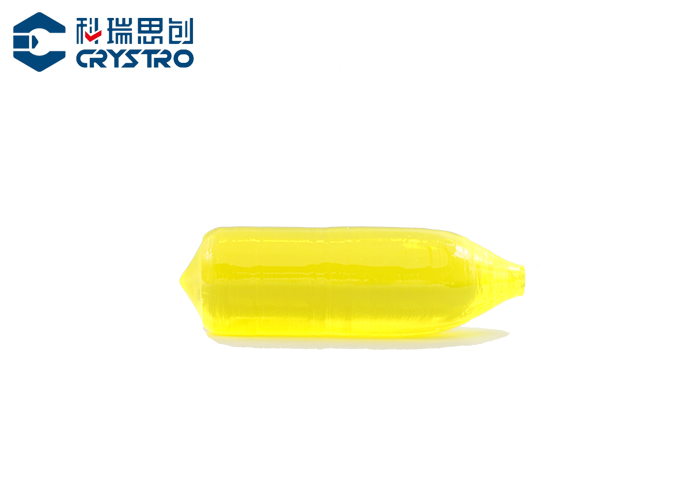Table of Contents
Radiation detection systems play a crucial role in nuclear medicine, homeland security, and industrial applications. At the heart of these systems, scintillator crystals convert radiation into detectable light pulses. Among these crystals, Lutetium Aluminum Garnet doped with Cerium (LuAG(Ce)) stands out for its outstanding light output and energy resolution. However, integrating these crystals into radiation detection systems is not without its challenges. So, let's shed light on some intricacies of LuAG(Ce) scintillator crystals and potential obstacles faced within radiation detection applications.

Crystal Growth and Consistency
Creating LuAG(Ce) crystals requires superior precision, as any impurities or irregularities can impact their performance. Achieving uniform crystal growth on a large scale remains a significant challenge, affecting both light output and energy resolution. It is important to ensure consistent and homogeneous crystal growth by focusing on quality control and manufacturing processes.
Stability in Extreme Conditions
Ensuring the thermal and mechanical stability of LuAG(Ce) scintillator crystals is paramount for practical applications. These crystals must endure varying environmental conditions without compromising their structural integrity or performance. Managing temperature fluctuations becomes crucial, as they can influence the crystal's light output and introduce uncertainties in radiation detection. Additionally, protecting crystals against mechanical stresses is vital, requiring careful integration into detection systems.
Compatibility with Photodetectors
Efficiently coupling LuAG(Ce) scintillator crystals with photodetectors poses another challenge. To maximize detection sensitivity and accuracy, it is vital to optimize light collection and transmission from the crystal to the photodetector. Achieving harmonious synergy between spectral responses of the photodetector and the emission spectrum of LuAG(Ce) demands meticulous calibration and alignment. Rigorous testing is required to ensure seamless compatibility and proper functioning of these critical components.
Radiation Damage and Aging Effects
Over time, scintillator crystals can suffer from radiation-induced damage and aging effects. LuAG(Ce) scintillators, while robust, are not immune to these issues. Radiation exposure can cause color center formation and luminosity degradation, potentially impacting long-term detection efficacy. To combat this, proactive measures such as shielding and periodic assessment are necessary, alongside a deep understanding of the crystal's radiation response.
Optimization of Signal Processing and Readout
Converting light pulses generated by LuAG(Ce) scintillator crystals into accurate radiation measurements requires adept signal processing and readout optimization. Balancing signal-to-noise ratios, pulse discrimination, and energy calibration poses a multi-faceted challenge. Advanced electronics and data processing algorithms are necessary for efficient extraction of relevant information from light pulses. Incorporating such techniques into radiation detection systems is essential to improve precision and accuracy.
Holistic Integration and Application-Specific Considerations
Integrating LuAG(Ce) scintillator crystals into radiation detection systems requires a comprehensive approach that considers specific application requirements and constraints. Customizing the integration process to suit the nuances of nuclear medicine, environmental monitoring, or security screening demands careful consideration. Seamless integration while addressing application-specific needs necessitates adaptive engineering and system customization.
Paving the Way: Innovation and Collaboration
Although challenges exist, they present opportunities for innovation and collaboration. Advancements in crystal growth techniques, material science, and engineering methodologies hold the potential to overcome these obstacles. Collaboration among researchers, engineers, and industry stakeholders can foster cross-disciplinary solutions, propelling the evolution of radiation detection capabilities.

As we navigate the complexities of LuAG(Ce) scintillator crystals, focusing on quality control, material resilience, precise integration, and forward-looking research will drive breakthroughs in radiation detection. By embracing these challenges as catalysts for advancement, we pave the way for enhanced radiation detection systems, ensuring safety, precision, and reliability across various critical applications.

